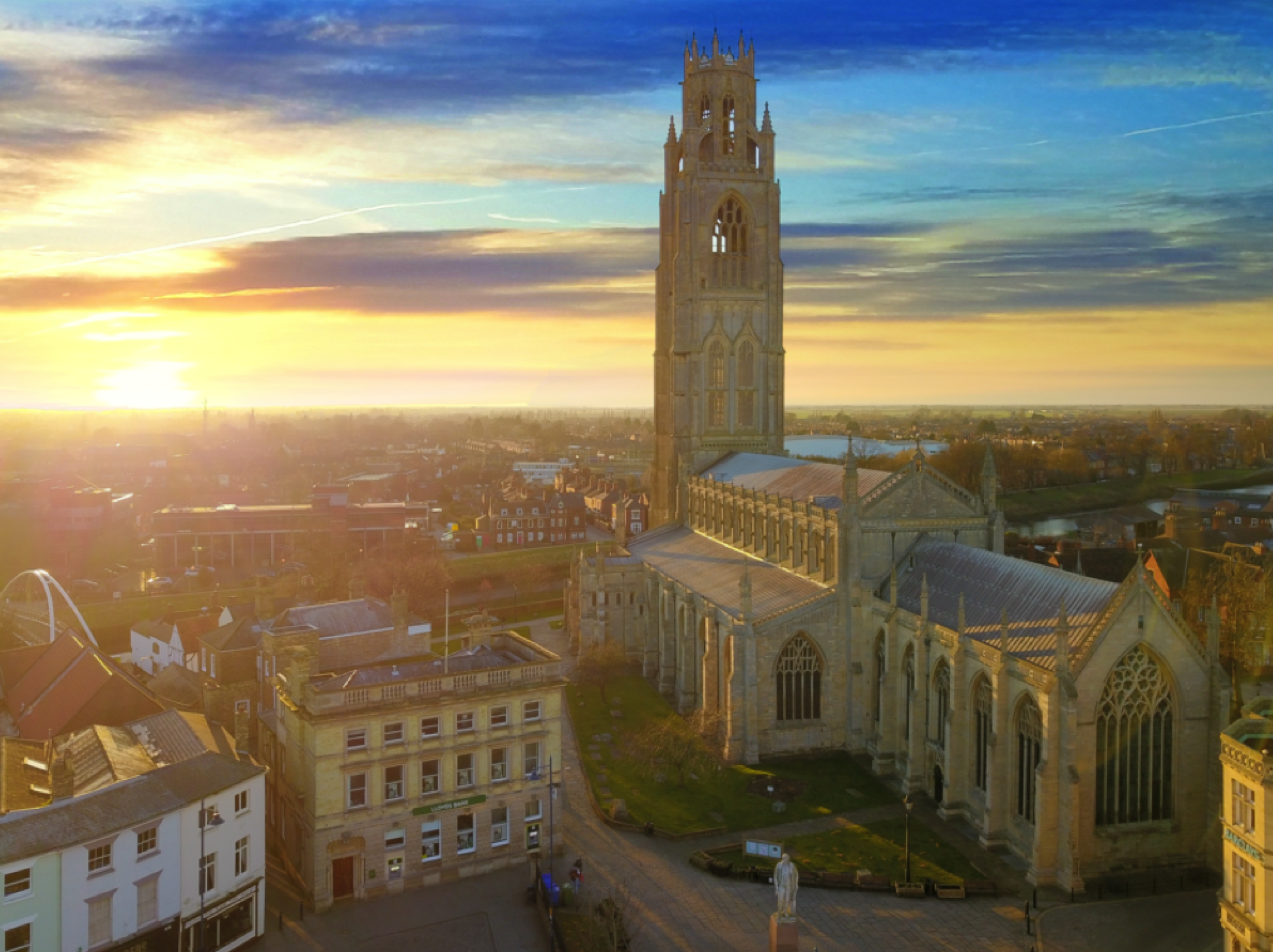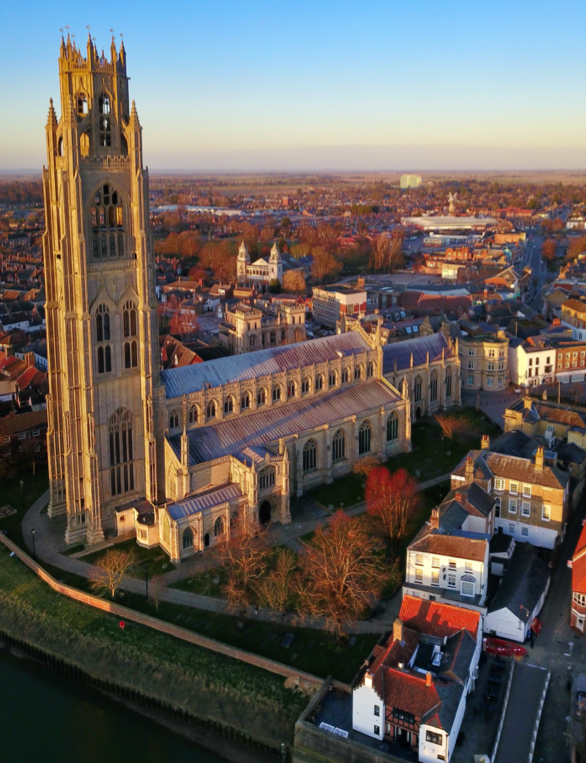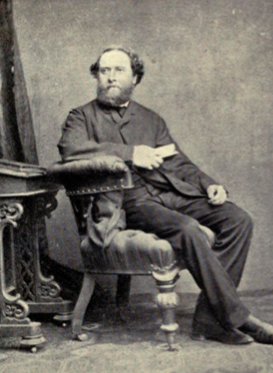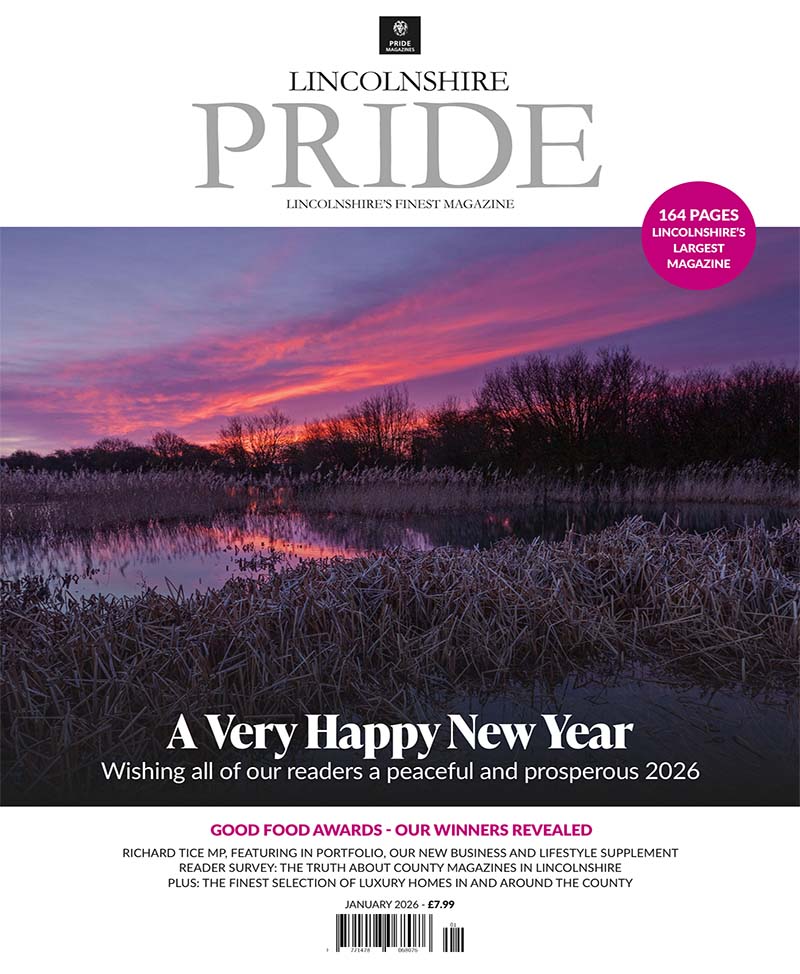
The History and Heritage of Boston
Despite the town’s downbeat reputation in national newspapers’ headlines, glorious Boston’s history and heritage is extensive and its list of notable Bostonians and architecture worth recognition is even longer…
A Boston girl born and bred, I come across two main responses to where I’m from; anyone outside of Lincolnshire remarks that I don’t seem to have an American twang to my accent, and anyone from Lincolnshire seems to screw their noses up. It frustrates me people feel this way, and that Boston seems to suffer from such a bad rap in the media. I’m proud of where I’m from, and Boston is such a great town with so much to offer its residents, not to mention its proud history (it is the original Boston that founded its American counterpart).

The list of notable Bostonians is extensive and the town’s architecture is visible for miles around. The ‘Stump’ or St Botolph’s Church as it’s more formally known is one of the largest parish church in England. In what is still a matter of debate, there are a number of believed origins of the church’s nickname that at first applied to the tower and is now frequently used to describe the whole church.
What is certain is the real roots have long since faded from memory. The first is that the tower took so long to build it resembled a stump during the construction phase. 70 years was not, however, a particularly long time for a tower of such height to be built.
Many similarly tall structures would be built a level at a time over hundreds of years. Secondly, it was intended to be completed with a spire. This seems unlikely as there has not been a single recorded lantern tower in England that has been topped with a spire.
It is, however, possible that a spire was originally intended resting on the first phase of the tower. It would have looked rather like St. James Church in Louth. The third explanation is that it is named after the dramatic appearance it creates rising from the flat fenlands that surround it for miles. Other churches, including Ely Cathedral, also derive nicknames from their appearance when viewed from the fens.
The name Boston is said to be a contraction of ‘Saint Botolph’s town.’ Boston grew into a notable town and port in the 11th and 12th centuries. In 1204, King John levied a tax of 6.67% on the moveable goods of merchants in the ports of England. The merchants of Boston paid a total of £780, the highest in the kingdom after London’s £836. Therefore, it was already significant in trade with the continent of Europe and ranked as a port of the Hanseatic League. Edward III named it a staple port for the wool trade in 1369.
Apart from wool, Boston also exported salt, grain and lead. Henry VIII granted the town its charter in 1545 and Boston had two Members of Parliament from 1552. In 1612 John Cotton became the Vicar of St Botolph’s and became responsible for a large increase in Church attendance. He encouraged those who disliked the lack of religious freedom in England to join the Massachusetts Bay Company, and helped to found the city of Boston, Massachusetts, which he was instrumental in naming.
At the same time, work on draining the fens to the west of Boston had begun, a scheme which displeased many whose livelihoods were at risk. This and the religious friction put Boston into the parliamentarian camp in the Civil War which began in 1642. The chief backer of the drainage locally, Lord Lindsey, was shot in the first battle and the fens returned to their accustomed dampness until after 1750.
The later 18th century saw a revival when the Fens began to be effectively drained. A sluice was designed to help scour out The Haven. The land proved to be fertile, and Boston began exporting cereals to London. In 1774 the first financial bank was opened. The railway reached the town in 1848, and it was briefly on the main line from London to the North.
Boston remained something of a local railway hub well into the 20th century, moving the produce of the district and the trade of the dock, plus the excursion trade to Skegness and similar places. Boston once again became a significant port in trade and fishing in 1884, when the new dock with its associated wharves on The Haven were constructed.
It continued as a working port, exporting grain, fertiliser, and importing timber. During the First World War many of the town’s trawlermen, together with those from Grimsby, were taken prisoner after their ships were sunk by German raiders in the North Sea. Their families did not know what had happened to them until late September 1914. The men were taken to Sennelager camp, then on to Ruhleben POW camp where most remained till repatriated in 1918. Meanwhile, the port was used by hospital ships and some 4,000 sick or wounded troops passed through Boston. The first cinema opened in 1910, and in 1913 a new Town Bridge was constructed.
Central Park was purchased in 1919, and is now one of the focal points of the town. In the Second World War the borough lost 17 civilian through enemy air raids. There is a memorial in Boston Cemetery that commemorates them in addition to all the men who lost their lives during the war. The long list of notable Bostonians includes John Taverner, who was a popular English composer/organist in the 16th century, regarded as one of the best and one of the most important English composers of his era.
John Leverett, the penultimate governor of the Massachusetts Bay Colony, was the most notable Boston of the 17th century. In the 18th, British naval surgeon George Bass who explored Australia attended Boston Grammar School and later trained in medicine at the hospital in Boston. The most notable 19th century Bostonian is Jean Ingelow, a well known poet and novelist.

In the most recent centuries, you may know Alan Moulder, record producer on albums from some of the world’s biggest rock bands. Robert Webb is a comedian born in Boston you may know from ‘Peep Show.’ A DC Comics artist also originates from this small town in Lincolnshire; Brian Bolland. He designed and created comics and his most notable character was Judge Dredd.
Boston is a town that has had a big impact on the world despite its reputation and small estimated population of just under 67,000. Bostonian predecessors have left their mark on the world, and they’ve also turned Boston into a great market town. From the ancient buildings like Boston’s Guildhall and Blackfriars’ Art Theatre, to modern projects like the new Boston United stadium currently underway, there’s so much Boston has to offer and it’s definitely a town that can surprise people with its offerings and its story.






